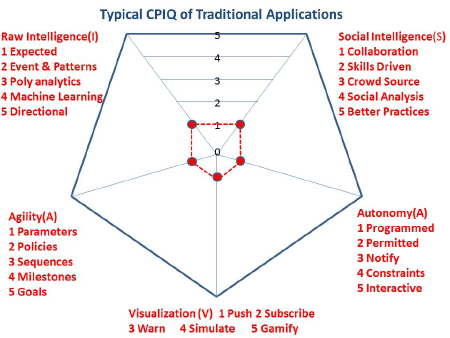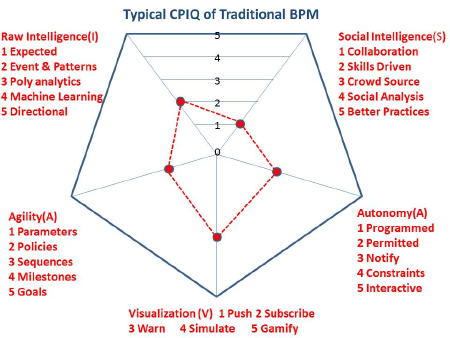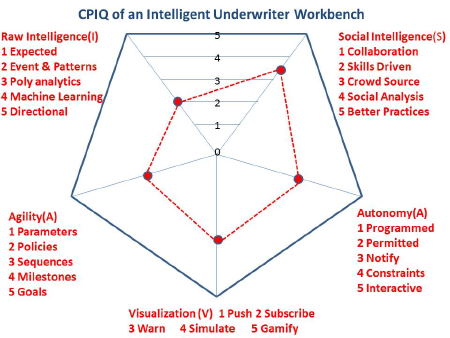First Test Drive of the Cumulative Process Intelligence Quotient (CPIQ)
In my series "How Smart Is your Business?" I've outlined the four dimensions of the ISAA framework, enumerating the ways to measure the intelligence of your processes in terms of being: Intelligent, Social, Agile, and Autonomous. I have proposed a way to measure and visualize the cumulative intelligence of a process by creating a shape that lets us observe the cumulative IQ of our processes — a Cumulative Process IQ (CPIQ) diagram — and last time I promised to give the CPIQ a test drive.
I first thought about using the CPIQ on the most intelligent processes I could find, but I changed my mind and decided to start with processes and applications that I had experience with in the past. Only then would I branch out into the new and emerging intelligent processes. This way I could contrast what happened in the past with what is happening more frequently with BPM today. To that end, I selected the following to test the CPIQ:
- A traditional application
- A traditional process done via traditional BPM capabilities
- A hybrid traditional process/rule enabled application
Traditional Application
Traditional applications — whether they are hand-crafted legacy applications or best practice application packages — do not show the kind of process intelligence that will be required to meet the changing business needs facing us today and in the foreseeable future. It was not a great surprise that these applications did not fare well on the CPIQ spider chart. Applications augmented with additional technologies like rules engines would fare better.

Figure 1. Typical CPIQ of Traditional Applications
Traditional Process
Early process efforts with BPM did not exercise the kind of intelligence that would be necessary in the business environments evolving today. While there were significant improvements in visualization and dynamic navigation with simple rule/event engines, this would not be enough to compete in a change-prone world.

Figure 2. Typical CPIQ of Traditional BPM
Hybrid Process Charged Application
Before BPM became a software category, I had the opportunity to write a workbench-based process and rule-driven underwriter workbench. We created a dynamic worklist/workbench that provided a high-end collaboration environment where work specialists could share an emerging life insurance policy. High-risk cases were shared amongst speciality roles within the organization, with rule-driven services applied as needed. It was ahead of its day, but still not intelligent enough for today's world.

Figure 3. CPIQ of an Intelligent Underwriter Workbench
Net; Net
I found the CPIQ spider useful in determining the intelligence level of some of the past applications and processes that I had the pleasure to work on in my career. Next time I will turn my attention to some of the more intelligent processes emerging today.
# # #
About our Contributor:
Online Interactive Training Series
In response to a great many requests, Business Rule Solutions now offers at-a-distance learning options. No travel, no backlogs, no hassles. Same great instructors, but with schedules, content and pricing designed to meet the special needs of busy professionals.










How to Define Business Terms in Plain English: A Primer
How to Use DecisionSpeak™ and Question Charts (Q-Charts™)
Decision Tables - A Primer: How to Use TableSpeak™
Tabulation of Lists in RuleSpeak®: A Primer - Using "The Following" Clause
Business Agility Manifesto
Business Rules Manifesto
Business Motivation Model
Decision Vocabulary
[Download]
[Download]
Semantics of Business Vocabulary and Business Rules